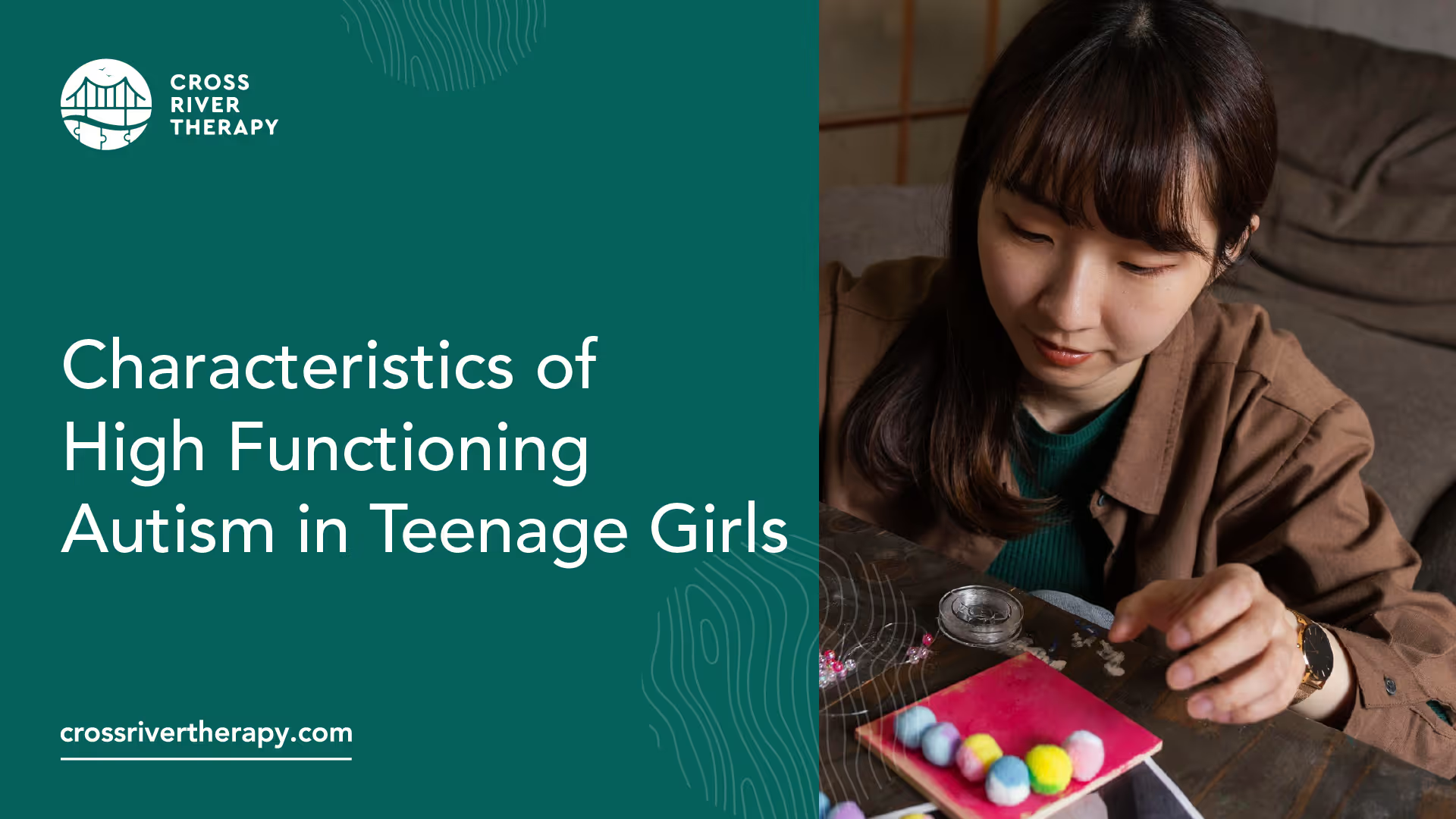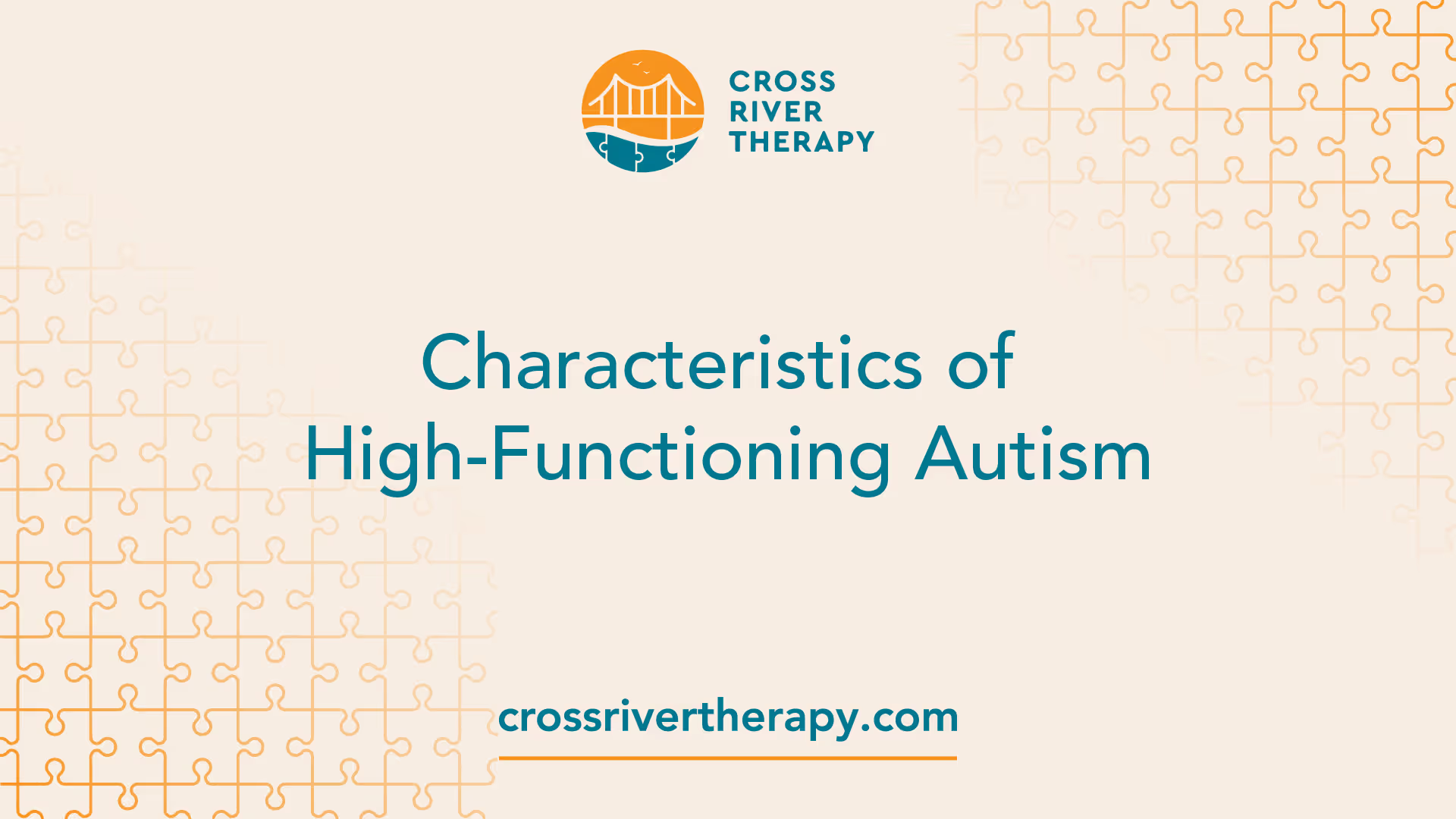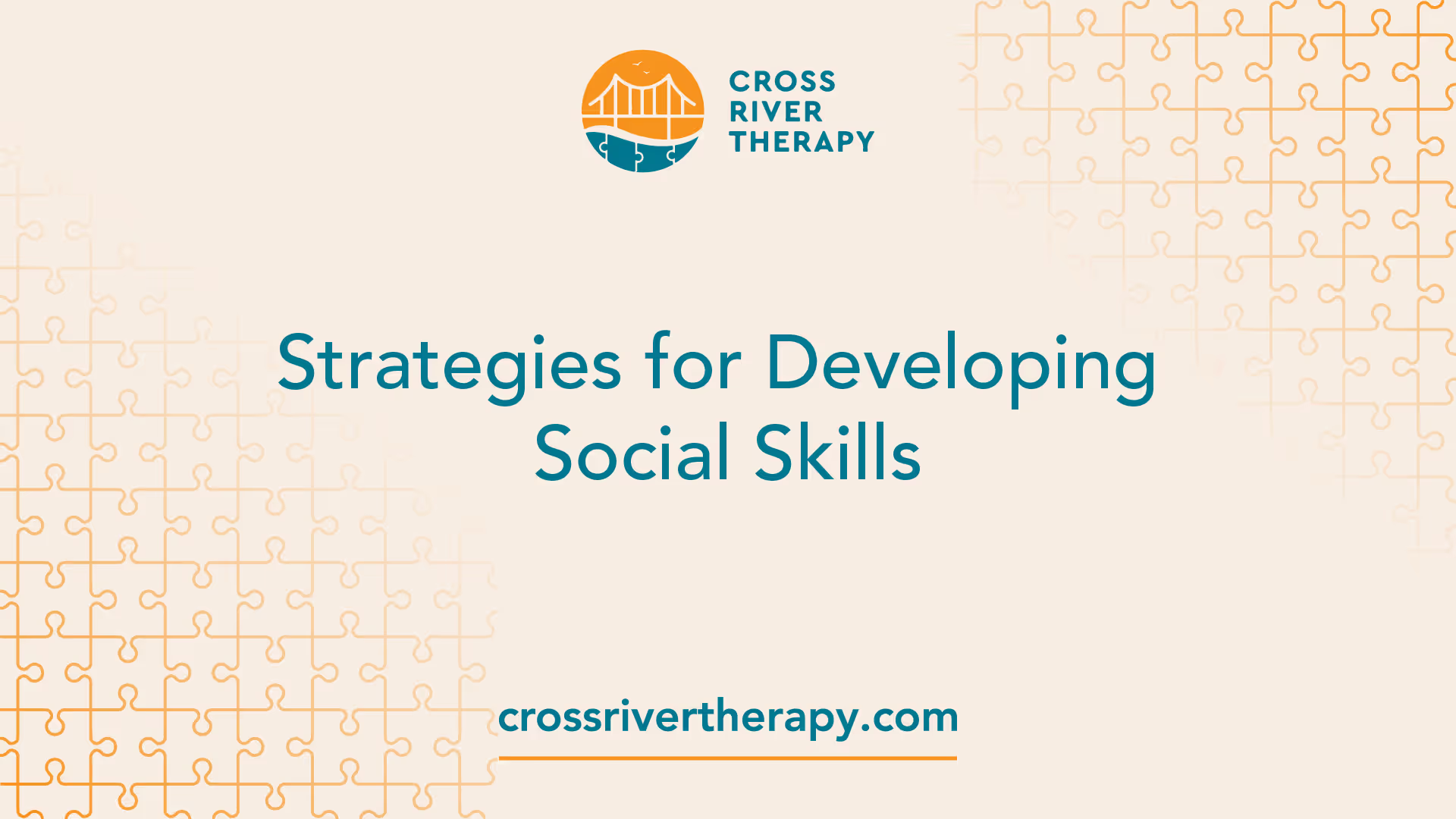Characteristics of High Functioning Autism in Teenage Girls
Discover characteristics of high functioning autism in teenage girls and empower yourself to support them.
Understanding High-Functioning Autism in Teenage Girls
High-functioning autism in teenage girls presents unique challenges and often manifests differently than it does in boys. Recognizing these differences is crucial for timely diagnosis and effective support.

Different Presentation in Girls
Girls with high-functioning autism often exhibit different behaviors and symptoms compared to boys with the same condition. They may be more likely to experience social difficulties, anxiety, and depression [1]. These internalized behaviors can make it harder to identify the signs of high functioning autism in teenage girls.
Autistic traits in girls may be missed, dismissed, or overlooked because behaviors are internalized, such as in the case of masking or camouflaging. If these behaviors do not cause disruptions or problems, individuals may be overlooked for a diagnosis until mental health deteriorates to a point where behaviors become more visible.
Moreover, repetitive and restrictive behaviors in autistic girls may manifest differently than traditionally thought. They might involve actions such as re-reading the same book, watching the same program repeatedly, or writing about the same topic to satisfy the need for predictability. These behaviors may not align with stereotypical behaviors associated with autism in boys [2].
Challenges with Diagnosis
The diagnosis of high-functioning autism in teenage girls often comes later compared to boys. Females are typically diagnosed 2-3 years later than boys on average, due to differences in presentation, with a diagnostic ratio of 3 boys to every 1 girl diagnosed. This discrepancy may not be a true representation of the female population as girls are often missed for reasons such as masking and presenting internally.
Late diagnosis is common in 'high functioning' or academically able individuals, especially in girls, as they are skilled at imitating neuro-typical behaviors to mask their autism. This delay in diagnosis can be due to ambiguity in symptoms, the presence of other conditions like challenging behavior or ADHD, and the increasing stress of secondary school environments.
Recognizing the unique characteristics of high functioning autism in teenage girls can be a challenge, but it's crucial for providing them with the support and resources they need. Understanding these differences and challenges is the first step in empowering parents to effectively support their teenage girls with high-functioning autism.
Characteristics of High-Functioning Autism
Understanding the characteristics of high functioning autism in teenage girls is crucial for providing them with the necessary support and interventions. It's important to note that these traits can manifest differently from person to person, but generally, social difficulties and anxiety or depression are commonly observed.

Social Difficulties
Teenage girls with high-functioning autism often face unique social challenges. They may have trouble building healthy relationships with peers, making friends, and navigating various social situations. These social difficulties are often due to their struggles with maintaining eye contact, assessing social cues, and understanding the nuances of verbal communication.
Their friendships may be based more on shared interests rather than emotional connections. Additionally, they may exhibit symptoms such as delayed speech, fear of social situations, difficulty sharing, and resistance to touch.
For more information on social challenges faced by teenage girls with high-functioning autism, you can check our article on social challenges in teenage girls with high functioning autism and communication difficulties in teenage girls with high functioning autism.
Anxiety and Depression
Another key characteristic of high-functioning autism in teenage girls is the higher likelihood of experiencing anxiety and depression, compared to boys with the same condition [1]. These mental health challenges can be a result of their social difficulties, sensory overload, and intense emotions.
Anxiety in social settings, trouble making decisions, and adherence to strict routines are common traits in individuals with high-functioning autism. It's crucial for parents and caregivers to be vigilant for signs of anxiety and depression, as these conditions can impact the teenager's overall wellbeing and quality of life.
Understanding these characteristics can help parents and caregivers recognize the signs of high-functioning autism in their teenage girls. Early recognition can open doors for appropriate interventions and support, helping these girls navigate their formative years with resilience and confidence. For a comprehensive list of symptoms, you can refer to our article on symptoms of high functioning autism in teenage girls.
Strategies for Developing Social Skills
One of the key characteristics of high functioning autism in teenage girls is difficulty in social interaction. However, there are effective strategies to help these individuals to enhance their social skills.

Role-Playing and Self-Management
Role-playing is an effective technique for developing social skills in teenage girls with high-functioning autism. It allows them to practice different social scenarios in a safe and controlled environment. This can help them understand and master the nuances of social interactions, preparing them for real-life situations [4].
Self-management techniques can also be beneficial. These techniques involve teaching the individual to recognize and regulate their own behaviors and reactions. This can help them to respond more effectively to social situations and manage potential stress or anxiety.
Joining Social Groups and Utilizing Social Media
Joining social groups can provide teenage girls with high-functioning autism with the opportunity to interact with peers in a structured setting. These groups often involve the guidance of professionals such as special education teachers, speech pathologists, and clinicians who provide direct instructions and opportunities for real-life practice.
Social media can also be a helpful tool for social interaction. It allows teenagers with high-functioning autism to connect with people they know from school or activity groups. This platform provides them the opportunity to take their time to communicate and think about what they want to say, removing the need to interpret non-verbal cues [4].
Programs such as the PEERS program at UCLA, which is designed to teach social skills over a course of 16 weeks, can also be beneficial.
Developing social skills in teenage girls with high-functioning autism is a continuous process that requires patience, understanding, and the right strategies. While these strategies can be effective, each individual is unique and may require a personalized approach. It's important to explore different techniques and find the ones that work best for the individual. For more information on the symptoms and social challenges faced by teenage girls with high-functioning autism, visit our articles on symptoms of high functioning autism in teenage girls and social challenges in teenage girls with high functioning autism.
Supporting Teenage Girls with High-Functioning Autism
Parents and caregivers play a crucial role in providing support and fostering the development of teenage girls with high-functioning autism. This includes understanding the characteristics of high functioning autism in teenage girls, recognizing the importance of early intervention, and considering therapeutic approaches like Cognitive Behavioral Therapy (CBT).
Importance of Early Intervention
Early intervention is crucial for addressing behavior problems associated with High-Functioning Autism (HFA) and promoting positive outcomes. Recognizing signs of high functioning autism in teenage girls and seeking a diagnosis as early as possible can provide explanations for long-standing struggles, shift perspectives towards self-acceptance, and grant access to support services tailored to ASD needs.
Early diagnosis and intervention can support individuals with HFA in their development, helping them acquire essential skills and improve their quality of life. This includes strategies for overcoming communication difficulties and social challenges.
Cognitive Behavioral Therapy (CBT)
Cognitive Behavioral Therapy (CBT) is an effective therapeutic approach for individuals with High-Functioning Autism. CBT helps individuals identify and challenge negative thoughts, develop coping strategies, and improve their emotional well-being.
This therapy is particularly effective in addressing emotional difficulties like depression, anxiety, and anger, common issues in individuals with HFA. By learning to challenge their negative thoughts, individuals can develop better coping strategies and improve their overall emotional well-being.
Furthermore, CBT can be tailored to the individual's needs and can incorporate various strategies for social skills development. This could involve learning from professionals like special education teachers, speech pathologists, and clinicians who may lead social skills groups that provide direct instruction and opportunities for real-life practice with peers [6].
Supporting a teenage girl with high-functioning autism involves understanding her unique needs, providing early and appropriate interventions, and exploring therapeutic approaches like CBT. By doing so, parents and caregivers can help them navigate the challenges of autism, develop essential skills, and improve their overall quality of life.
Overcoming Social Challenges
For teenage girls with high-functioning autism, social challenges can seem daunting. However, with the right approaches, these hurdles can be overcome. Here, we discuss two significant avenues to consider: social skills training programs and cognitive behavioral therapy.
Social Skills Training Programs
Social skills development for individuals with autism often involves learning from various professionals such as special education teachers, speech pathologists, and clinicians. These professionals may lead social skills groups providing direct instruction and opportunities for real-life practice with peers.
In these programs, the most common and well-supported intervention is "structured learning". This typically involves group settings where teachers instruct socially acceptable behavior, model the behavior, have children role-play, and encourage teens to use these skills with their peers.
Social skills for autistic teenagers are crucial. They help them build healthy relationships with peers and make friends, contributing to their self-esteem, wellbeing, and sense of belonging. These friendships might be based more on shared interests than feelings.
Strategies to help autistic teenagers develop social skills include role-play, self-management techniques, joining social groups, using social media, social skills training programs, social stories, watching TV programs, video modeling, and using visual supports and prompt cards.
Social media can be particularly beneficial for autistic teenagers to connect with people they know from school or activity groups. It allows them to take their time to communicate and think about what they want to say, while removing the need to interpret non-verbal cues.
For more information on the social challenges in teenage girls with high functioning autism and the potential strategies to address them, please follow the link.
Benefits of Cognitive Behavioral Therapy
Cognitive Behavioral Therapy (CBT) is a type of talk therapy that can be very beneficial in helping individuals with autism manage their anxiety and depression, which are common co-occurring conditions. CBT aims to help people become aware of negative thinking so they can view challenging situations more clearly and respond to them effectively.
Intervention at an early stage is critical, and CBT can be instrumental in helping teenage girls with high-functioning autism cope with their unique challenges. It can assist them in understanding their emotions, develop coping strategies for anxiety and depressive symptoms, and improve their social communication skills.
CBT is also beneficial in addressing the characteristics of high functioning autism in teenage girls. It helps in understanding their unique presentation of autism and assists them in developing strategies to navigate their social world.
In summary, while social challenges can be daunting for teenage girls with high-functioning autism, they are not insurmountable. With the right support, guidance, and resources, they can overcome these hurdles and lead fulfilling lives.
Masking and Camouflaging in Autistic Girls
A critical part of understanding characteristics of high functioning autism in teenage girls is recognizing the common tendency for girls to mask or camouflage their autistic traits. This behavior involves the deliberate or unconscious suppression of natural autistic responses to align with neurotypical norms.
Impact on Well-Being
Autistic masking or camouflaging can have a profound impact on a girl's well-being. This behavior often arises from a desire to fit in or avoid standing out due to their autism spectrum disorder (ASD) traits. However, it can lead to intense mental and emotional strain, as these girls are constantly suppressing their natural instincts and behaviors.
The constant vigilance and energy required to maintain this mask can lead to exhaustion, anxiety, and depression. Moreover, the fear of being discovered or the pressure to continually perform can significantly impact a girl's self-esteem and overall mental health. For more information on symptoms of high functioning autism in teenage girls, you can read our dedicated article.
Recognition and Understanding
One of the challenges in diagnosing high-functioning autism in teenage girls is the tendency for these traits to be overlooked or dismissed. Since these behaviors are often internalized and not disruptive, girls may not be diagnosed until their mental health deteriorates to a point where behaviors become more visible.
Moreover, the repetitive and restrictive behaviors characteristic of autism may manifest differently in girls. For example, they may satisfy their need for predictability by re-reading the same book or repeatedly watching the same program, which may not align with traditional behaviors associated with autism in boys.
Recognizing and understanding these distinctive characteristics of high-functioning autism in teenage girls is crucial for early intervention and support. By acknowledging the impact of masking and camouflaging, parents, teachers, and healthcare professionals can provide more targeted and effective support. To learn more about the social challenges in teenage girls with high functioning autism and ways to address them, consider reading our article on the topic.
References
[1]: https://www.myaspergerschild.com/2017/02/aspergershigh-functioning-autistic.html
[2]: https://autismawarenesscentre.com/how-do-autistic-girls-present-differently-than-boys/
[3]: https://www.aspriscs.co.uk/news-blogs/signs-and-symptoms-of-autism-in-teenagers/
[4]: https://raisingchildren.net.au/autism/communicating-relationships/connecting/social-skills-for-teens-with-asd
[5]: https://www.thrivingwellnesscenter.com/blog/highfunctioningautismchecklist
[6]: https://www.autismspeaks.org/social-skills-and-autism
[7]: https://www.abtaba.com/blog/high-functioning-autism-behavior-problems
[8]: https://www.autismspeaks.org/expert-opinion/promoting-teen-social-skills



